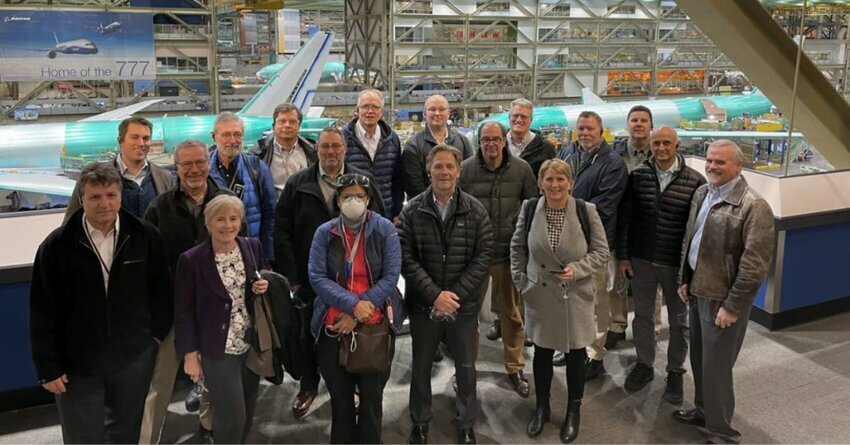 (Credit: Boeing)
(Credit: Boeing)
NASA has issued $50 million in awards to 14 organizations to develop manufacturing processes and advanced composite materials for aircraft structures. The awards are part of NASA’s Hi-Rate Composite Aircraft Manufacturing (HiCAM) project, which aims to reduce the cost and increase the production rate of composite structures made in the US.
The organizations receiving the funding are part of the Advanced Composites Consortium, a public-private partnership that allows partners to take advantage of each other’s expertise and increase the likelihood of the US aviation industry adopting results. The organizations will match NASA’s funding, doubling the investment in green aircraft technology development.
The Advanced Composites Consortium member organizations that received NASA funding through these latest awards are:
“HiCAM will bring the value of composite technology to the high-volume single-aisle fleet and accelerate aviation towards meeting its goal of net-zero carbon emissions,” said Dr. Richard Wahls, mission integration manager for the Sustainable Flight National Partnership at NASA Headquarters in Washington.
HiCAM established three manufacturing concepts: next-generation thermosets, resin-infused composites, and thermoplastic composites. The new awards will support the evaluation and development of these concepts at small scales, including experiments in material processing, assembly techniques, inspection, and structural performance.
In total, NASA plans to invest $184 million in HiCAM while partner organizations are expected to contribute $136 million, resulting in a total operating budget of $320 million.
Composite airframes are made of materials such as carbon fiber or fiberglass, that are strong and durable. Compared to traditional metal airframes, composite airframes are lighter. Allowing the aircraft to carry more payload or fuel for longer flights without sacrificing performance.
With more lightweight, composite airframes in service, airlines will save fuel and reduce emissions, making commercial aviation more sustainable. Sustainability, cost, and aircraft production rate drive US competitiveness in the commercial aircraft industry.
“By working together as a team, rather than as competitors, NASA and our partners will accelerate the development of technologies and the transition of those technologies onto the next generation of transport aircraft,” said Dr. Richard Young, HiCAM project manager at NASA’s Langley Research Center in Hampton, Virginia.
Researchers at NASA believe the green technologies developed through HiCAM hold the potential to help reduce aviation carbon emissions. As the aviation industry seeks to meet net-zero carbon emissions goals, the development of green aircraft technology is a critical step in achieving these goals.